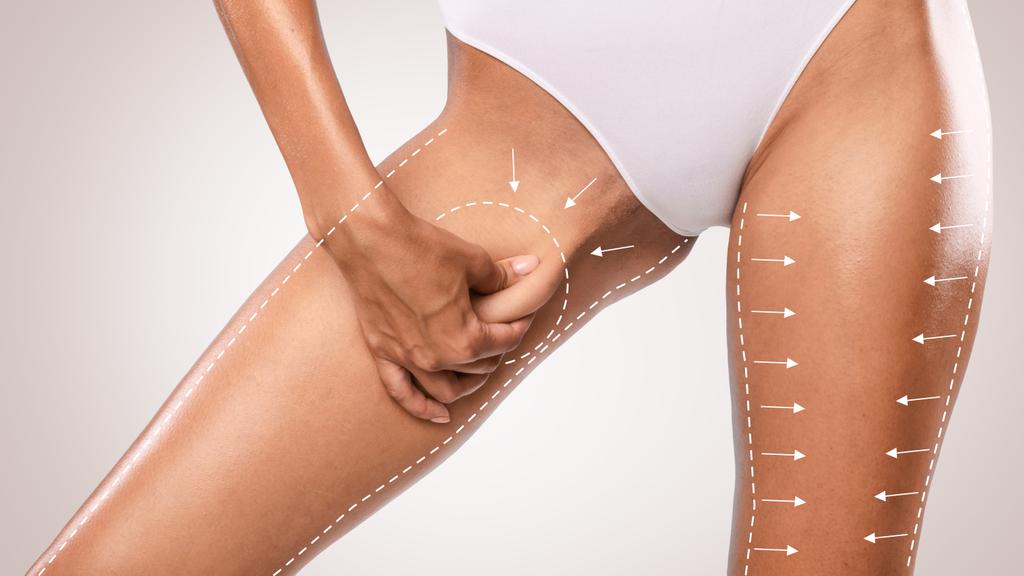
Thigh Lift
What does the surgery involve?
The operation removes the loose skin and fat and tightens the thigh. The procedure starts with liposuction to establish a plane and to remove any fat deposits. Two different incisions can be used depending on the severity of the loose tissue. A transverse incision in the groin can be used for cases with a small amount of loose tissue. This gives a discreet scar but will only permit moderate skin excision. For those with large amounts of excess tissue, a hockey-stick incision is necessary, with the hockey end in the groin area. Skin and excess tissue is removed from the inner side of the thigh and simultaneously lifted to reduce the bulk of the thigh and improve contour. The wounds are closed with dissolvable sutures that do not need to be removed. A compression garment is applied that needs to be worn for 4 weeks, day and night.

































































What are the risks and side effects of surgery?
Having cosmetic surgery can be a very positive experience. Complications are infrequent and usually minor. However, no surgery is without risk and it is important that you are aware of possible complications.
Scars
Scars tend to settle remarkably well, however some people heal with thick scars and this can make them more noticeable.
Bruising and swelling
Bruising and swelling is very common and may take several weeks to settle. It is very unlikely, but possible, that swelling will persist long term.
Haematoma
This can happen if a bleed occurs under the skin, allowing a large blood clot to form. If this does occur, it is likely to happen within four to six hours of surgery. Any increase in swelling or pain should be reported immediately so that treatment can be given. Sometimes patients need to have this blood removed with another short operation.
Infection
Not uncommon given the area and difficulty washing. You may require antibiotics but these are generally very effective and can be guided by swab results to give the most effective regimen.
Wound healing problems
These difficulties can range from minor problems, such as small areas of wound separation, to major issues, such as skin loss. Minor break downs are very common and happen in most patients to some degree. Although very rare, this situation may require a skin graft to close the wound, meaning more surgery. People who have diabetes, smoke, are obese or elderly are at an increased risk of delayed healing.
Numbness, reduced sensation or oversensitivity
This can occur. It is usually temporary, but occasionally these changes can remain to some degree.
DVT/PE
Following any surgical procedure it is possible to develop a blood clot in your legs, which could potentially break off and move to your lungs. If the blood clot is large enough it could prove fatal. In order to reduce any risks of this we give you special stockings to wear in bed and a blood thinning injection if you are not mobile.
Asymmetry/shape irregularities
These can occur following this operation. In rare cases, further surgery is needed to correct this.
All the risks will be discussed in detail at your consultation. However, if you have further questions or concerns, do not hesitate to discuss these with me. Decisions about cosmetic surgery should never be rushed.
What is the estimated time for recovery, absence from work and return to usual activities?
Recovery times vary from one person to another but most patients take 2 weeks off work. You can drive from 2 weeks and return to full activities at 4 weeks. You will be given a compression garment to wear for 4 weeks following your surgery.




